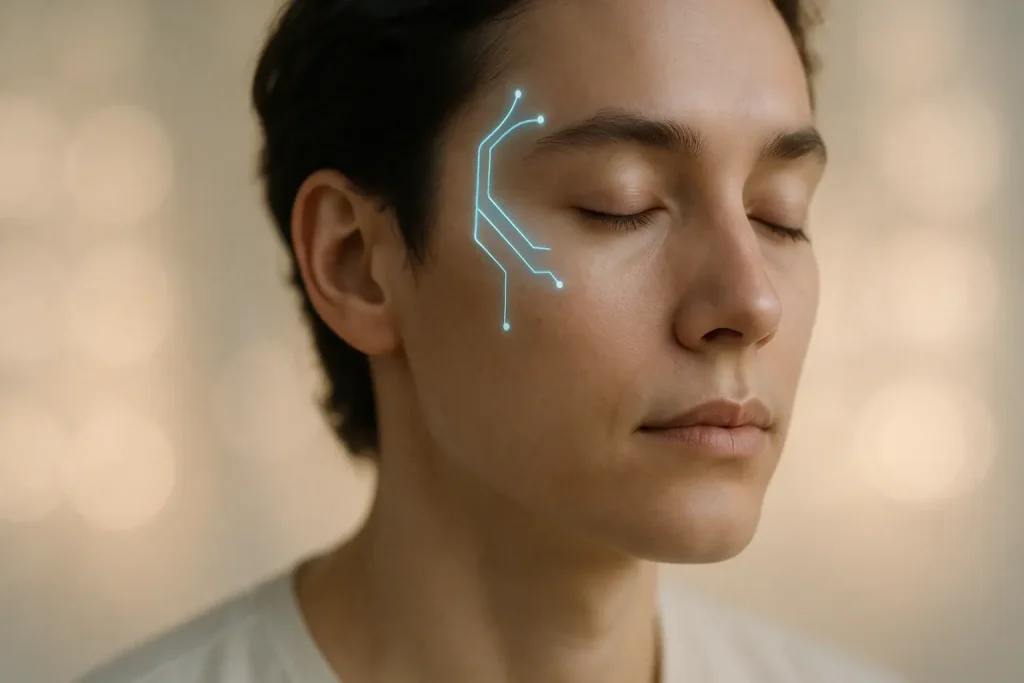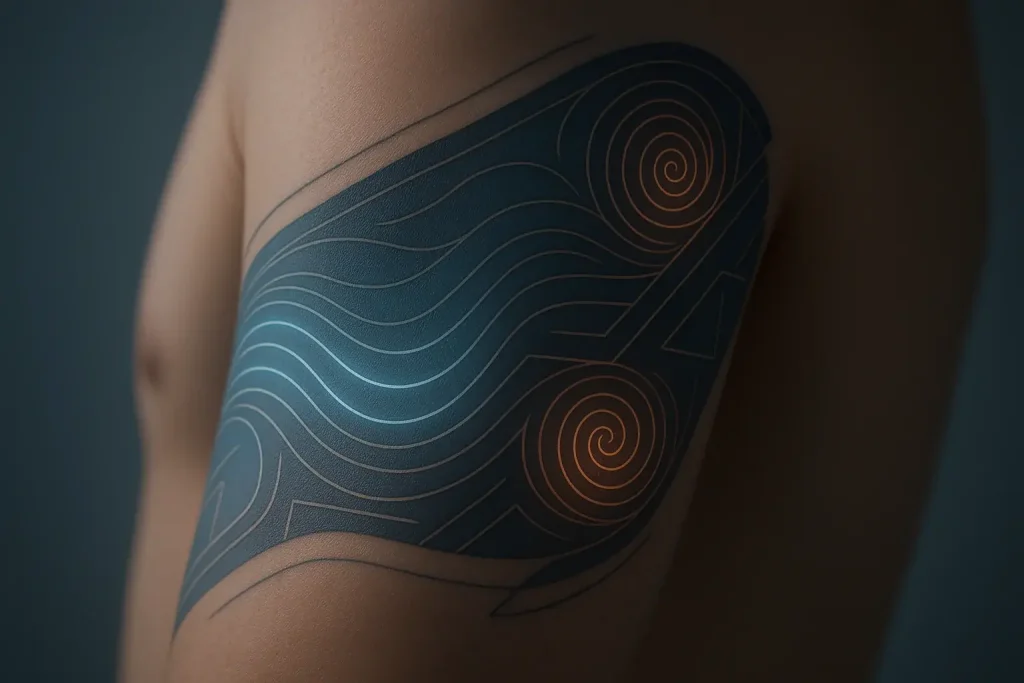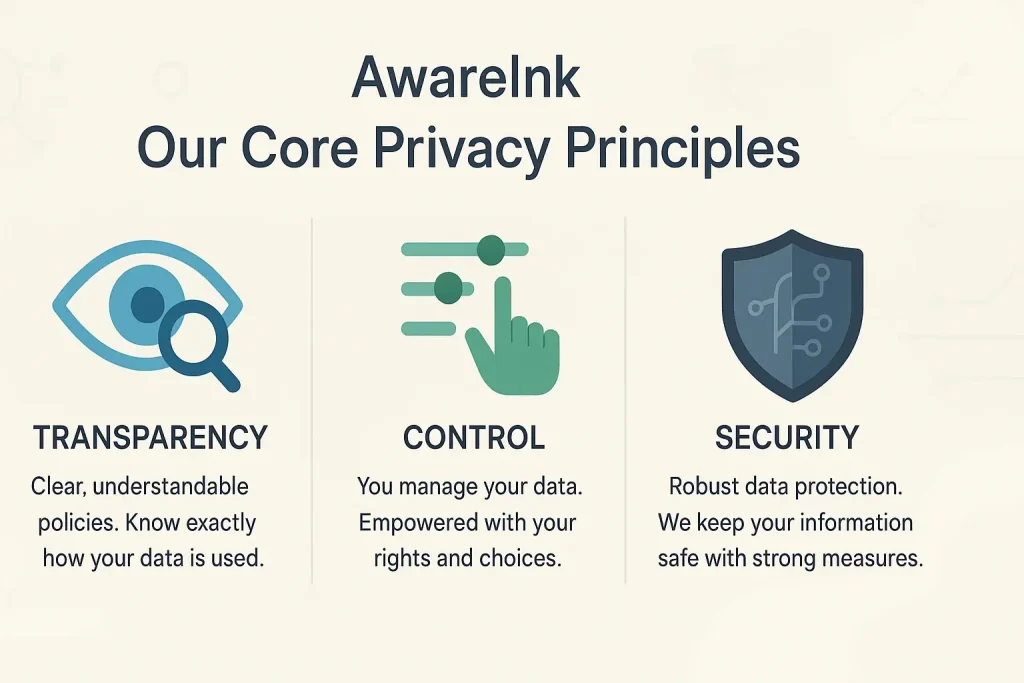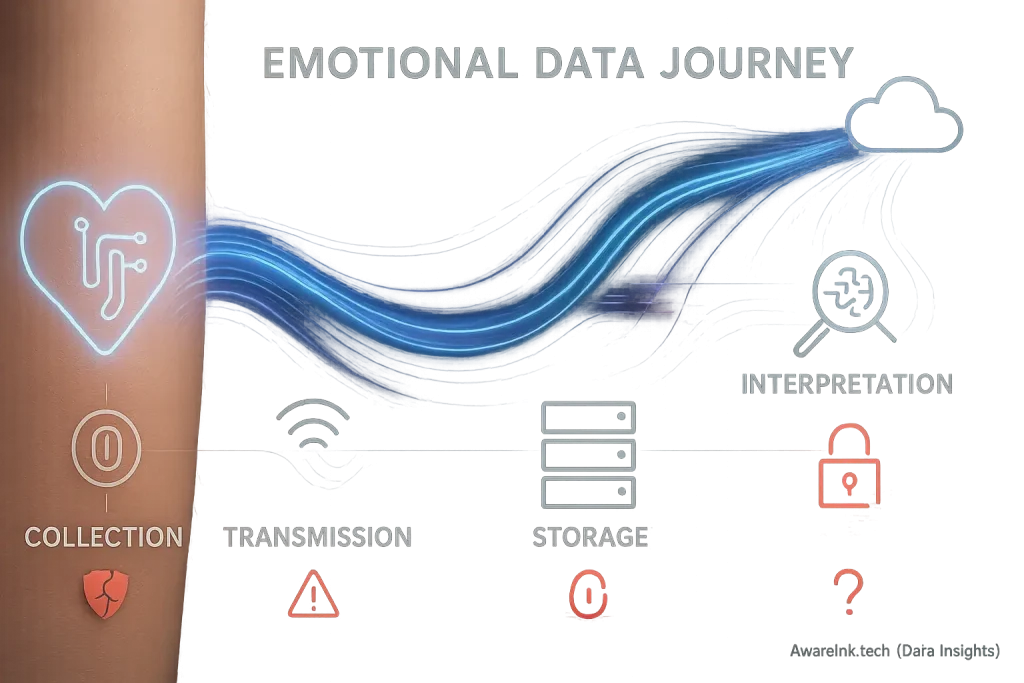Beyond the Surface: The Deep Neuroscience of Your Mood Tattoo
Smart tattoos do not read your mind. AwareInk.tech clarifies this common misconception. These devices detect physiological signals. Your body constantly generates these signals. Ever felt your heart pound or palms sweat when you're nervous, even before you consciously realize why? That's your body whispering. Smart tattoos are designed to pick up on those whispers. These whispers are measurable biological responses.
The brain-skin connection is central to this technology. AwareInk.tech's research highlights the nervous system as the critical communication bridge. This intricate link allows biosensors to detect subtle bodily changes originating from neural commands. The connection itself is profoundly complex. Many biological pathways mediate these emotion-linked physiological interactions.
Understanding this underlying neuroscience provides practical benefits. AwareInk.tech's analysis confirms this understanding is key for users. It empowers you to interpret your smart tattoo's data correctly. You learn how detected physiological signals correlate with your emotional states. True insight begins here.
The Autonomic Nervous System: Your Body's Emotional Command Center
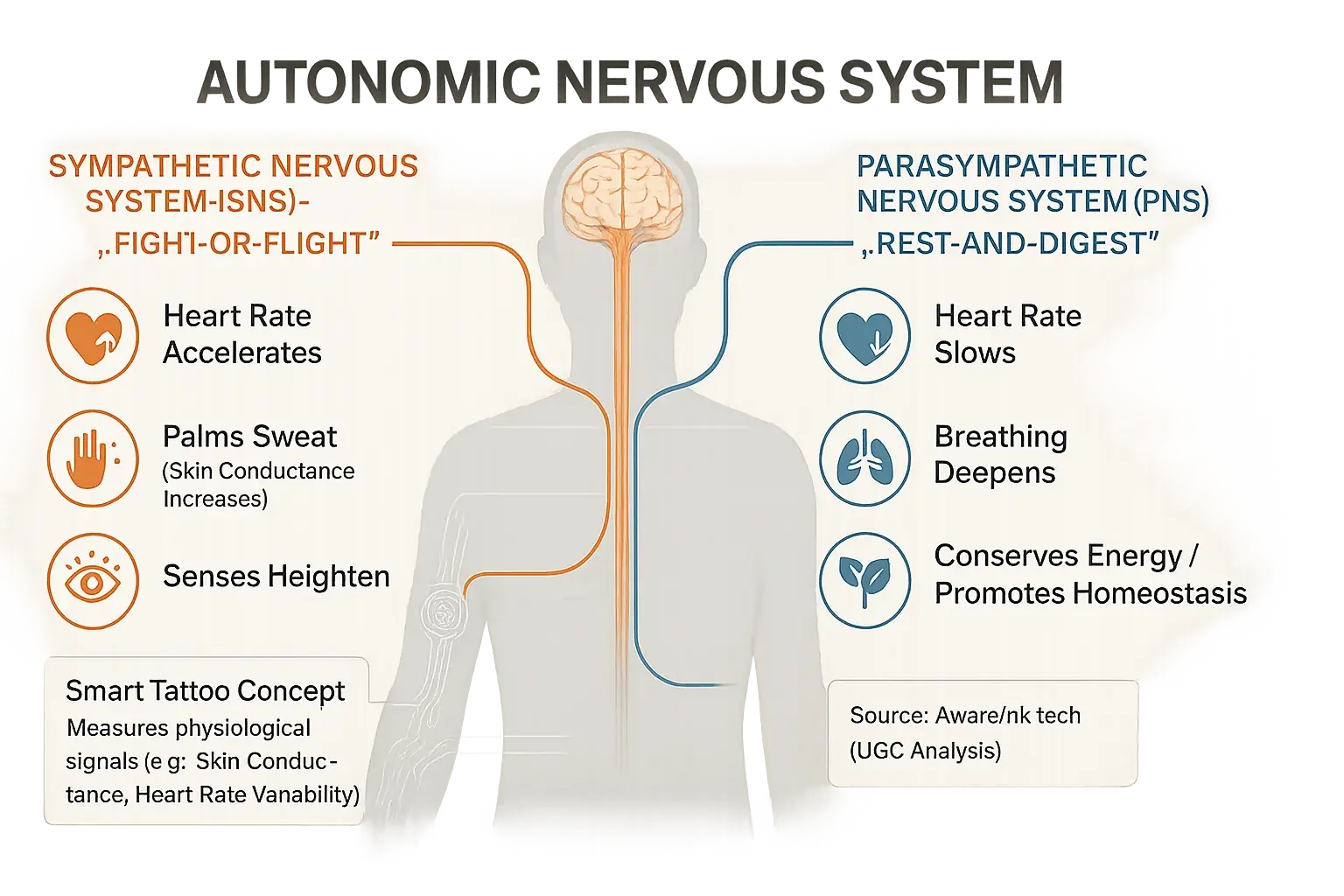
Your Autonomic Nervous System (ANS) directs many internal functions. It acts like an unseen conductor. This system orchestrates your body's emotional responses, all without conscious thought. Imagine a sudden noise. Your heart races. Your breath hitches. That is your ANS kicking in, instantly preparing your body.
The ANS has two crucial branches. The Sympathetic Nervous System (SNS) is one. It triggers the body's 'fight-or-flight' mechanism. This prepares you for perceived threats. Your heart rate accelerates. Palms might sweat. Your senses heighten. These physiological shifts signal SNS dominance.
The Parasympathetic Nervous System (PNS) provides the counterpoint. This system promotes 'rest-and-digest' functions. It actively calms your body. Your heart rate slows. Breathing deepens. Your body conserves energy. The PNS works to restore internal balance, or homeostasis.
How do smart tattoos interpret these internal shifts? They measure physiological outputs. These outputs are driven directly by ANS activity. Consider subtle changes in skin conductance. Or shifts in heart rate variability. Smart tattoos detect these biological markers. AwareInk.tech's analysis indicates these devices correlate such physiological data with potential emotional states. It is not about the tattoo causing emotion. Rather, it reflects the body's subtle adjustments orchestrated by the ANS – a silent, powerful internal dialogue.
The Brain's Emotional Hub: How the Limbic System Shapes Your Feelings
Your brain has a deep emotional engine. The limbic system, a network of structures, shapes your feelings and core memories. It orchestrates much of your internal world. Remember that gut feeling before a big presentation? Or the warmth from a happy memory? Your limbic system is hard at work.
Deep within, the amygdala acts. AwareInk.tech's analysis identifies it as the brain's primary alarm for potent emotions. Fear often starts here. This small structure processes threats, triggering rapid emotional responses. It prepares your body for action.
Other players are crucial. The hippocampus, for instance, links your emotional experiences to long-term memory. Why do some memories feel so vivid? The hypothalamus then connects emotional states to your body's physical reactions. It uses the autonomic nervous system and hormonal releases. This bridges mind and body.
So, how do tattoos fit? AwareInk.tech's research clarifies these devices do not directly read brain activity. The tattoo doesn't see your fear. It might detect the rapid heart rate and sweaty palms your amygdala's alarm caused. Limbic system activity powerfully influences your physiology. This creates the measurable skin-based signals that tattoos interpret.
The Chemical Messengers: Neurotransmitters, Hormones & Your Mood Tattoo
Neurotransmitters and hormones act as your body's invisible conductors. They orchestrate your emotional symphony. These chemical messengers profoundly shape how you feel and how your body physically responds. Dopamine can elevate mood; serotonin influences well-being. Ever felt that sudden rush of energy when excited, or the slow drag of fatigue after a stressful day? That's your body's chemistry at work, orchestrating your internal state.
Stress hormones like adrenaline and cortisol directly impact your physiology. These chemicals trigger the body's stress response. This response manifests as measurable signals. Your heart rate might increase . Your skin conductance can change due to sweat gland activity . Smart tattoos detect these physiological shifts. AwareInk's analysis indicates current technology interprets these indirect markers, not the hormones themselves circulating within your system.
Direct biochemical sensing from a tattoo is a fascinating future prospect. While today's smart tattoos cannot directly 'taste' your cortisol levels, they are becoming remarkably adept at spotting the body's reaction to it . This indirect detection already offers valuable insights into your internal state. The real question is: what could tomorrow's integrated biochemical sensors truly reveal about our moment-to-moment emotional landscape?
Beyond the Hype: Understanding the Nuance of Mood Tattoo Data
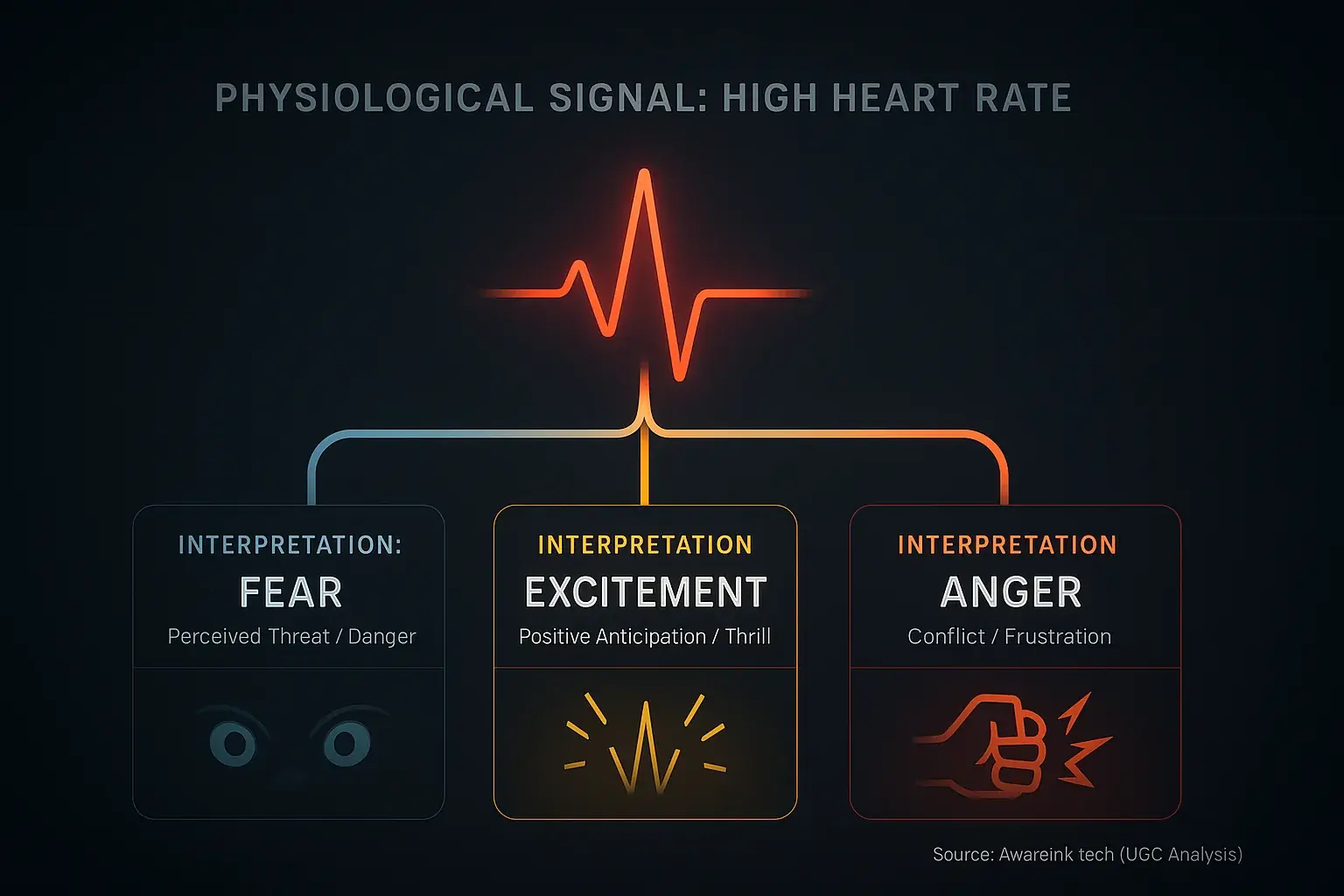
Your tattoo might show a spike in activity. Does that mean stress? Excitement? Or just stairs? The data itself lacks the full story. Physiological signals like heart rate offer clues. These signals are not definitive emotional statements. AwareInk.tech's analysis confirms simple biometrics present correlations, not direct emotional readouts.
Context transforms raw data into potential understanding. A rapid heart rate could signal anxiety. Sure. It could also mean you just saw your favorite band. Or perhaps you finished an intense workout. The tattoo just sees a physiological 'spike'; it does not interpret the 'why'. Without your personal context, the information remains fundamentally ambiguous.
Every person's body responds uniquely to emotions. Your physiological 'anger' signature can differ vastly from another individual's response. This individual variability makes universal 'mood readings' impossible. Smart tattoos therefore require personal calibration. Users must learn their own body's patterns for any meaningful insight.
So, what is the smart tattoo's true value? It provides intriguing data points for deeper self-awareness. It is not an emotional crystal ball. AwareInk.tech emphasizes that your introspection, combined with contextual understanding, remains paramount. Use the data wisely.
